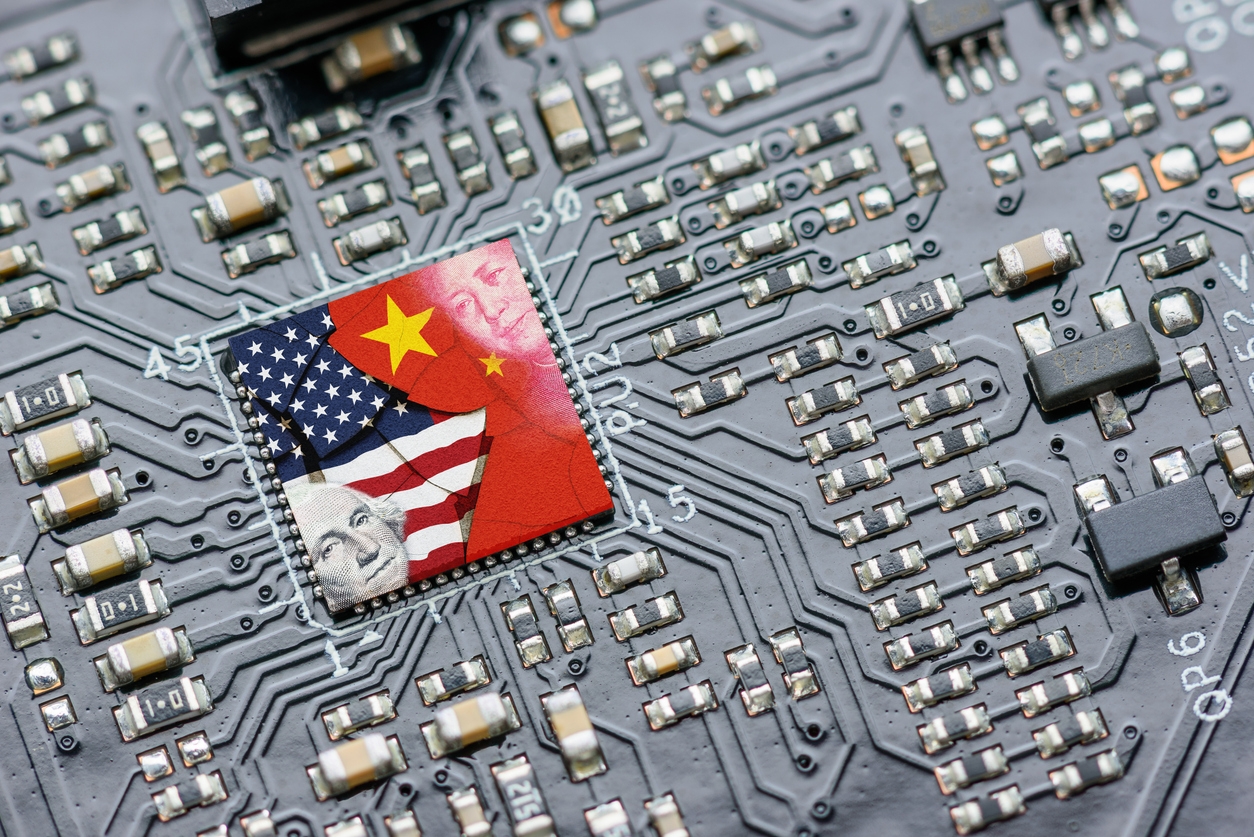What iPhone X Means for Investors & the Future

You might have heard something about the Apple iPhone X -- apparently it is out. This next-generation phone has long-term implications for technology markets, driving new chip, camera, 3D laser sensor, OLED, and artificial intelligence (AI) technology.
There is an incredible amount of technology packed into the new phone, backing up Apple's credentials as one of the most innovative companies on the planet. Apple's launch shows that you can combine powerful processing with incredible camera resolution and deliver apps for image recognition, mixed reality, and gaming.
Let's start with the A11 Bionic chip, developed by Apple, which includes a "neural engine" and uses machine-learning technology to interact with the camera and sensing technology to pull information from thousands of points to deliver facial recognition technology to unlock your phone with Face ID.
Apple says its dual-core A11 can perform 600 billion operations per second and delivers up to 30 percent faster graphics performance than the previous generation. Apple claims that with Face ID, there's only a 1 in 1,000,000 chance that a random person will be able to unlock your iPhone X by looking at it. That's up from 1 in 50,000 with Fingerprint ID.
Pretty cool. Maybe Equifax should look into it?
Summing it up, Nilay Patel, Editor in Chief of the Verge, says it's worth the $999:
"The thing that a lot of people want to talk about with the iPhone X is its $999 starting price, but when you have the phone in your hand, it feels... worth it."
But this phone isn't just about Apple, it's about its suppliers and where consumer technology markets are going. Let's take a look at some major trends:
OLED Drivers
One of the new Apple 8 and X iPhone's big selling points are outsized Organic Light Emitting Diodes (OLED) screens with high resolutions. This reflects a trend away from Liquid Crystal Display (LCD). Ironically, Samsung, one of Apple's big rivals in the phone market, stands to be a huge winner with the iPhone X as a supplier of the OLED screen. Samsung controls an estimated 90% of the OLED market.
Other OLED producers, including Universal Display (OLED) and Coherent (COHR), could benefit from the smartphone trends being led by Apple. While Apple has signed a deal with Samsung for OLEDs for the iPhone 8 and X, the trend is bullish for many OLED suppliers, as smartphones move from LCD to OLED technology.
Memory Demand
Memory, memory, memory. Sensor and video-intensive smartphones demand more powerful memory, including many dynamic random-access memory (DRAM) modules.
Micron Technology (MU) has already been a huge beneficiary from Apple by selling memory modules including DRAM. This is a huge profit component to the iPhone and lately memory demand has been driving up pricing. Micron shares have been marching higher into the iPhone 8 and X launch. Today they are trading flat at $34.27, down 0.02 (-0.06%), but yesterday they hit a new 52-week high and they are up 56 percent year-to-date.
3D & Optical Sensing Boom
3D laser sensing technology is part of the iPhone X and an important component for facial recognition as well as augmented reality. Companies such as Lumentum (LITE) makes lasers used in 3D sensors and controls about three-quarters of that market, according to Alex Henderson, a Needham & Co. analyst, though it's not yet clear whose 3D sensing technology is embedded in the iPhone 8 and X. Viavi Solutions is expected to be providing 3D laser filters for the iPhone.
Loup Ventures says that Apple will ship 239 million iPhones in calendar year 2018. Of that 239 million, 160 million will incorporate the 3D sensing technology, says Loup.
The Apple iPhone 8 and X launch did create some confusion in the 3D space, as some investors had anticipated that the 3D sensors would be included with both the front and rear-facing cameras, but for now they are just in the front. Simon Leopold of Raymond James explained it well in a note to investors this morning:
"We expect some confusion resulting from the lack of a rear facing 3D element. Furthermore, our colleague and Apple analyst Tavis McCourt suggests the mix may be more skewed toward the IPhone 8 than the iPhone X than our models assumed. We envision Lumentum as the primary beneficiary with Finisar and II-VI Incorporated as holding more modest share."
Today, Lumentum shares rose +1.03 (+1.79%) 58.28 in early morning trading. Coherent fell -4.53 (-1.77%) to $251.00.
Things are less clear for another optical supplier, Finisar (FNSR). "We believe Finisar faces a delay and initially will have less than the 25% share of a single array we had previously assumed," writes Leopold. Finisar shares today were basically flat, trading down three cents at $21.75 (-0.16%).
Austria-based AMS is also a big player in optical sensors, supplying many components to Apple. The company recently invested $600 million to acquire Heptagon Micro Optics Pte. and Princeton Optronics Inc., adding sensors that work with the optical and laser components. Apple represents 20 percent of its revenue, according to Bloomberg.
Apple Could Bounce Into Earnings
What does all this mean for Apple shares? UBS analyst Steve Milunovich has observed that Apple's stock trading pattern has been consistent on recent announcements: It's traded down in the two weeks preceding the event, been weak in the two weeks post-launch, and then traded higher into earnings. In other words, buy the dip.
"We think there is somewhat greater near-term downside risk this time though we expect the stock to outperform over the next 6-12 months," writes Milunovich, who believes the new phones will help Apple's pricing and earnings overall.
Apple has shown you can assemble a powerful ecosystem of components, package them with powerful AI chips, and build a smart device that has sophisticated awareness of the environment. This is the same trend building in the self-driving car market, where the potential for sensor technology is huge.
It's clear that the potent combination of high-resolution cameras, sensors, GPS technology, and machine learning will lead to an explosion of immersive technologies that change the way we interact with the environment and technology.


















